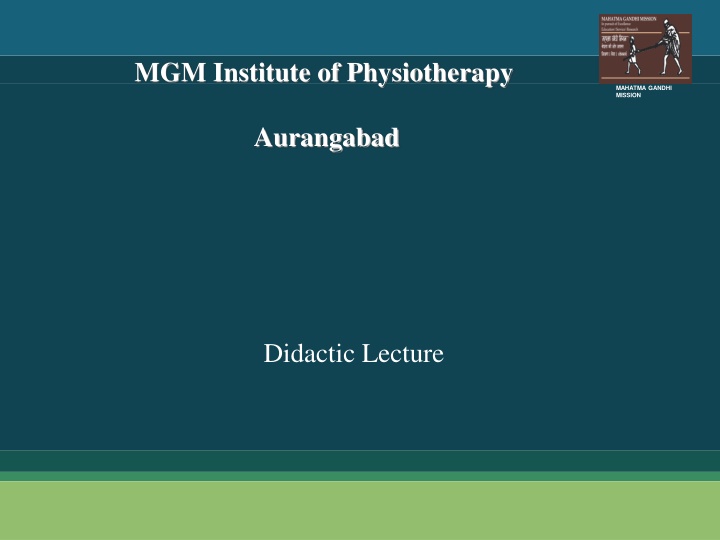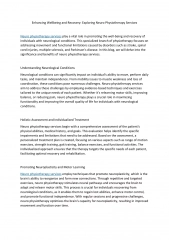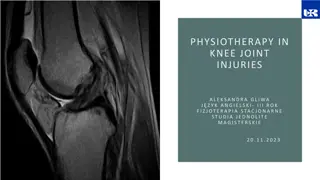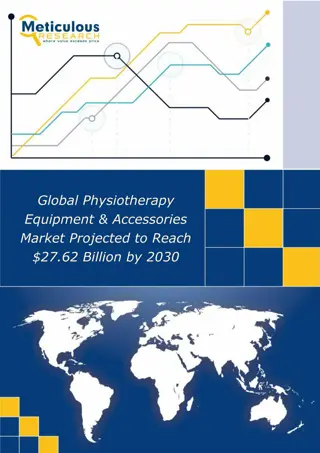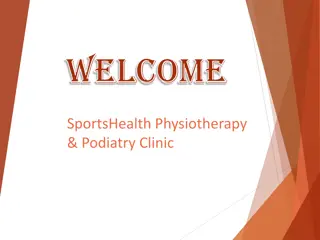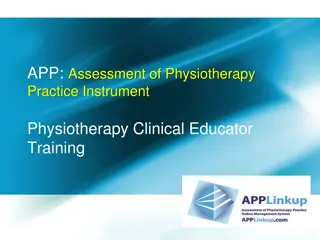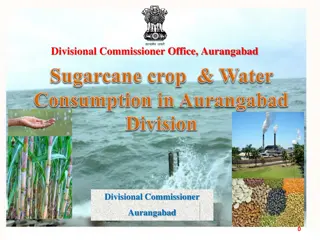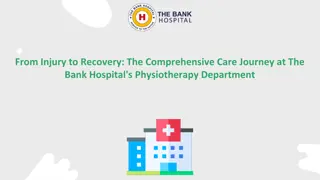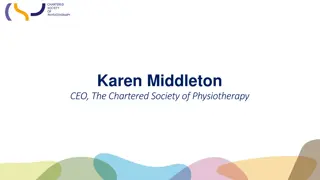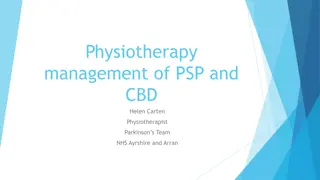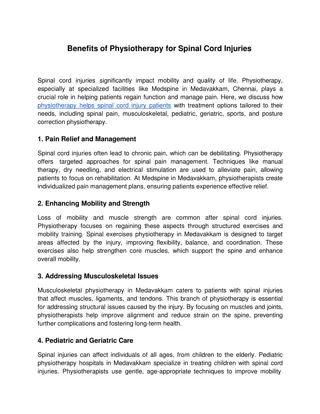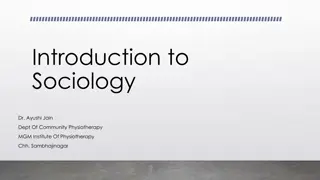MGM Institute of Physiotherapy Aurangabad
In this engaging lecture at MGM Institute of Physiotherapy, students will delve deep into the principles and practices of physiotherapy. The session will cover a range of topics to enhance understanding and practical skills in the field. Join us for an enriching educational experience at Mahatma Gandhi Mission Aurangabad.
Download Presentation

Please find below an Image/Link to download the presentation.
The content on the website is provided AS IS for your information and personal use only. It may not be sold, licensed, or shared on other websites without obtaining consent from the author.If you encounter any issues during the download, it is possible that the publisher has removed the file from their server.
You are allowed to download the files provided on this website for personal or commercial use, subject to the condition that they are used lawfully. All files are the property of their respective owners.
The content on the website is provided AS IS for your information and personal use only. It may not be sold, licensed, or shared on other websites without obtaining consent from the author.
E N D
Presentation Transcript
MGM Institute of Physiotherapy MAHATMA GANDHI MISSION Aurangabad Didactic Lecture
Elbow joint assessment Elbow joint assessment Dr. surendra Wani Dept. Of Musculoskeletal Physiotherapy MGM Institute Of Physiotherapy Chh. Sambhajinagar SKW 2
Objectives To understand and learn to assess the elbow joint subjectively and objectively. SKW 3
Introduction Introduction - synovial joint between the lower end of humerus and upper ends of radius and ulna bones. - elbow joints contain humeroradial and humeroulnar joints. SKW 4
Carrying Angle.. Transverse axis of the elbow joint is directed medially and downwards. Because of this, the extended forearm is not in straight line with the arm , but makes an angle of about 13 degree with it. This is known as carrying angle. Disappears in full flexion & pronation. Male - 10 to 15 degree Female - more than 15 degree SKW 5
Demographic Data Name - Age - Sex - Occupation - Religion - Dominance - Date of admission - Date of evaluation - SKW 6
Chief complaints Why the patient come for help ? What are the complaints patients come with ? Tennis elbow Golfers elbow Students elbow(miner's ) Cubitus valgus Cubitus varus Gun stock deformity SKW 7
History of present illness When did the accident occur or the what was the mechanism of the injury ? Has the elbow injured before ? How long has the patient had the problem ? Does the condition come and go ? What activities aggravate the problem ? SKW 8
Pain assessment What are the details of the present pain and other symptoms ? What are the boundaries and site of the pain ? Is pain radiating and is it worse at night ? Are there any activities that increase or decrease pain ? Does pulling (traction) twisting (torque) or pushing (compression) after the pain ? Are there any position that relieve the pain ? SKW 9
Past history Past surgical history Past medical history Does the patient have a history of surgery or past illness ? What was the site of operations and what condition was being treated ? Does the patient have history of hypertension , diabetes mallitus SKW 10
Drug history Has the patient been received analgesics , steroids or any other medications ? If so for how long ? When did he last take the medication ? Did the medication help ? SKW 11
Personal history Appetite Sleep Bowel Bladder SKW 12
Occupational history What is the patient occupation ? What does the patient do at the work ? Does he use special support ? How many hours he works ? SKW 13
Socioeconomic history What is the socioeconomic status of the patient ? What is the educational status ? Kuppuswami scale. SKW 14
Environmental history What is the environment of the house ? House is made up of ? Flooring present or not ? Well ventilated or not ? SKW 15
General physical examination BMI Patients body built Vitals - PR , RR , BP , temp , PICCLE SKW 16
On observations General observations Posture - Anterior view - The examiner first places the patients arm in the anatomical position to determine whether there is a normal carrying angle. Cubitus valgus Cubitus varus Gun stock deformity Anterior and posterior view - look for normal bony and soft tissue contours SKW 17
Examiner should note whether the patient can assume the normal position of function of the elbow . (90 degree flexion) Gait - Is the gait is normal ? Patients attitude - Which type of attitude patients have ? SKW 18
Local physical examination On inspection Patients position - Attitude of limb - Deformity - Is there any deformity of joint ? Tennis elbow Golfers elbow Students elbow Gun stock deformity Cubitus valgus Cubitus varus SKW 19
SKW 20
Bony contours - is there any bony contours present over the joint ? Soft tissue contours Muscle wasting Swelling Oedema Scar Wounds / ulcer Bandage SKW 21
On palpation Local temperature Tenderness - check on the bony prominent Muscle spasm Muscle wasting Swelling Odema Crepitus SKW 22
Scar examination Is there any scar present over the joint ? Whict type of scar it is ? Healed or unhealed ? Length of scar ? Adherent or non adherent ? Is is discharging or non discharging scar ? SKW 23
Sensory examination Superficial sensation Pain Touch Temperature Deep sensations Proprioception , kinesthesia , vibration Cortical sensation SKW 24
Joint examination 1. Active movements - painfree complete / painful complete , painfree limited / painful limited 2. Passive movements - painfree complete / painful complete , painfree limited / painful limited SKW 25
Capsular pattern Combined movements - Regular strech pattern , regular compression pattern , irregular pattern Accessory movement /joint play. SKW 26
Muscle examination 1. Muscle strength 2. Muscle length 3. Resisted isometrics 4. Muscle girth SKW 27
Nerve examination 1. Integrity of the nervous system. Myotomes Dermatoms Reflex testing SKW 28
Measurements Limb length True Apparent Segmental SKW 29
SUMMARY & QUestions Carrying angle. 3 marks Three point relationship. 3 marks SKW 30
SKW 31
